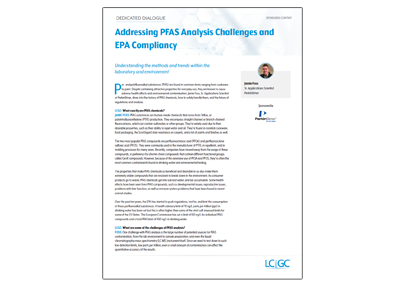PFAS Analysis in Drinking Water - Understanding Methods, Challenges and Trends
Per- and polyfluoroalkyl substances (PFAS) are of increasing concern. In October 2021, the U.S. Environmental Protection Agency (EPA) announced an action plan for addressing PFAS, including establishing maximum contaminant levels for drinking water. The vast presence and detrimental impact to human health and the environment of these analytically challenging compounds has led to focus on technique rigor necessary for sensitive, reproduceable and reliable data. In this podcast, Senior Application Scientist, Jamie Foss, addresses the differences between EPA methods 533 and 537.1, and how to overcome key LC-MS/MS technique challenges when performing analysis in accordance with these methods.
This information is supplementary to the article “Accelerating Monoclonal Antibody Quality Control: The Role of LC–MS in Upstream Bioprocessing”, which was published in the May 2025 issue of Current Trends in Mass Spectrometry.
Investigating the Protective Effects of Frankincense Oil on Wound Healing with GC–MS
April 2nd 2025Frankincense essential oil is known for its anti-inflammatory, antioxidant, and therapeutic properties. A recent study investigated the protective effects of the oil in an excision wound model in rats, focusing on oxidative stress reduction, inflammatory cytokine modulation, and caspase-3 regulation; chemical composition of the oil was analyzed using gas chromatography–mass spectrometry (GC–MS).





